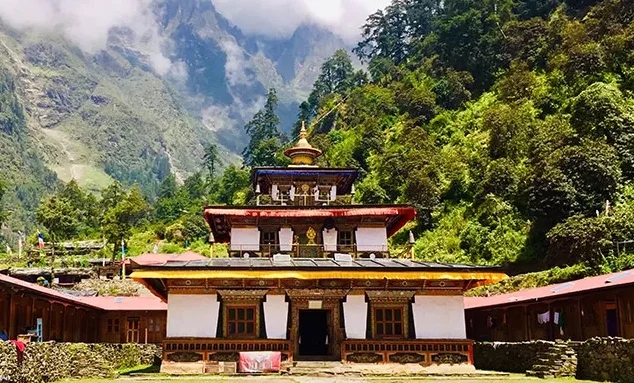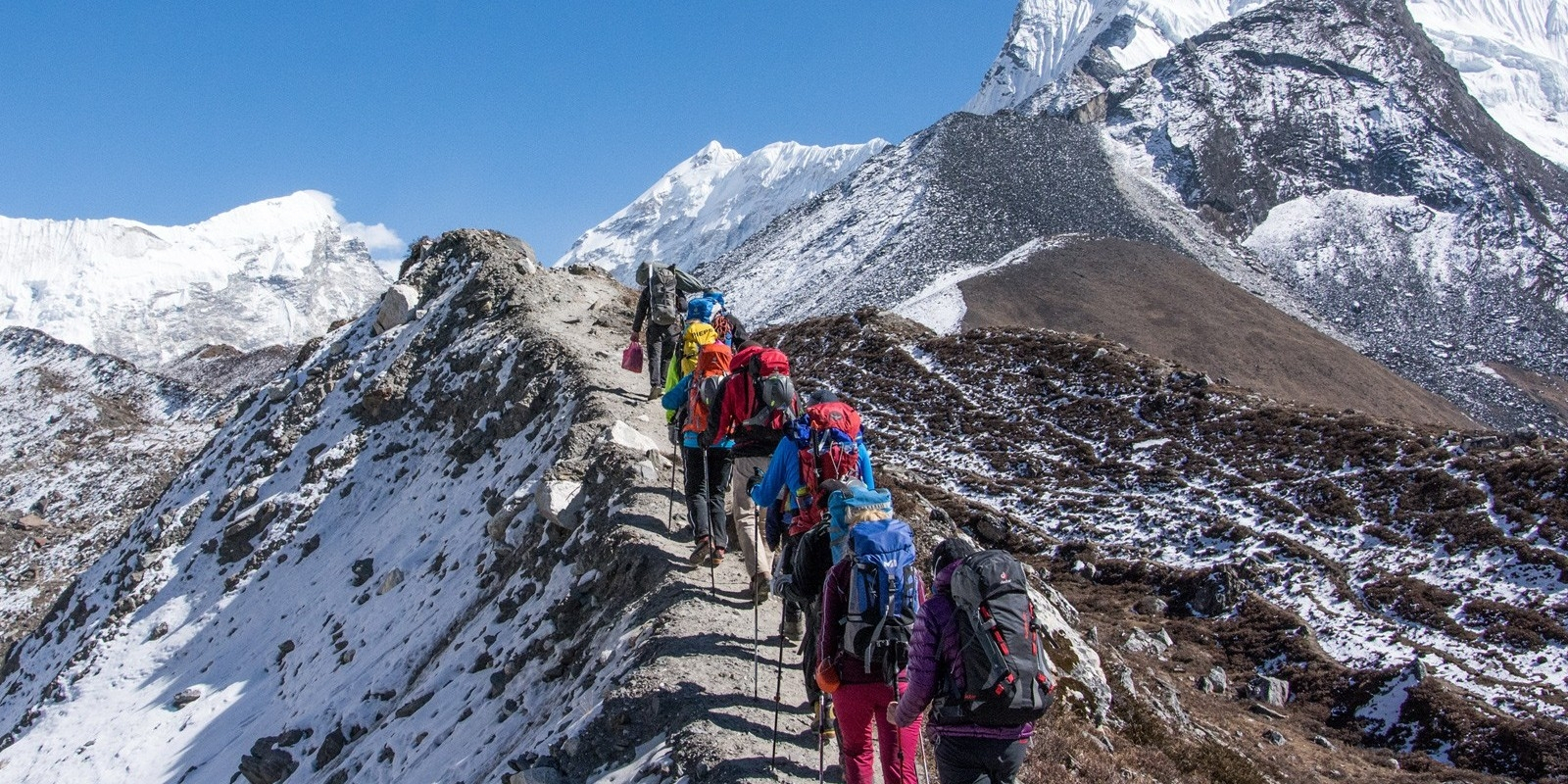Authentic Manaslu Circuit Trek: Villages, Culture & Mountain Views – A Comprehensive Guide
Authentic Manaslu Circuit Trek: Villages, Culture & Mountain Views - IntroductionThe Authentic Manaslu Circuit Trek has experienced remarkab...

Nestled in the remote and magical Tsum Valley of Nepal is an ancient Buddhist monastery called Serang Gompa. With centuries of spiritual past behind it, and implying generations of gods before it, Serang Gompa offers a glimpse into the rich Buddhist history of the region, as well as a place of solace for monks and visitors lost in the beauty of the Himalayas.
Before we talk about the importance of Serang Gompa, we should first discuss the context of the Tsum Valley itself. Tsum Valley is in the north west of Nepal, part of Gorkha district. It is an off-the-beaten-path destination in Nepal because it is a truly isolated region and not heavily impacted by mass tourism. It has its own people, known as the Tsumba, speak very particular language, customs and traditions. Over the years, the Tsum Valley has remained isolated from masses of tourists not just because of its secluded nature but because of its inaccessibility.
With snow-capped mountains looming over it, the valley reveals an unchained way of life that has lasted for hundreds of years. Serang Gompa is the spiritual heart of this valley and indicates the presence and continuity of Buddhism in the country. At an elevation of roughly 3,200 meters (10,500 feet), the monastery captures the feeling of being in a different realm, where time appears immobile and the peaceful surroundings continue to invite a deeper reflection upon oneself.
Various reports and oral accounts suggest that Serang Gompa was established many years ago but there are no exact dates recorded. The monastery is part of the Tibetan Buddhist cultural framework, borrowing from the Tibetan Buddhist school of thought, and is considered mainly a Gelugpa institution, one of the four major sects of Tibetan Buddhism, other examples of which appear throughout the valley. The valley has many other monasteries and stupas, but Serang Gompa is recognized for its religious importance, as well as the historical factors.
In the local dialect, "Serang" means "golden," which might refer to the monastery's duty as an uplifting light of sorts to the people of the area. Monasteries such as Serang Gompa have not only been traditional centers of worship and meditation but have also historically provided social gatherings and education. For many centuries, the monks have dedicated their lives to the not only study of Buddhist scriptures but also taking part in meditation and preserving and implementing ancient Tibetan teachings for the new generation.
By choice, the remote and isolated region has also helped preserve the monastery's real character and remain a living representation of Tibetan Buddhism in its authentic/uncorrupted form. The monastery and its culturally rich history are a significant part of Tsum Valley's religious structure.

Serang Gompa is more than a tourist destination, it's a living site of spirituality. For centuries, it has served as an abode for monks and spiritual seekers, providing a retreat from the mundane rhythm of political, economic and social life. The monastery is also tied to the spiritual practice of local people, who visit Godc, often, looking for both blessing and point of inspiration and reflection at a sacred space.
The teachings of the monastery centre on meditation, compassion, and wisdom. The monks at Serang Gompa have a command of the Buddhist scriptures and spend much of it studying and praying. In the early morning a visitor may witness the monks chanting ancient mantras in unison, and hear the resonance of their participation engaging a moment in time and space in the service of harmony for all that is. These passages of practice may be expressed as religious activity, but could be understood as a form of connection to divinity, and nature itself.
A particular aspect of Serang Gompa is its strong bond with the local people, the residents of Tsum Valley are a predominantly Tibetan Buddhist group. The local people know the monastery as a place of reverence, that is an important part of their community to receive offerings, which reinforces their connection with the traditions, culture, and spirituality of the Tsumba people.
For the monks living at Serang Gompa a simple life is fulfilling. Daily meditation, prayer, and study, gives monks a chance to find peace and wisdom. The monks allow visitors to feel the sense of calm in every area of solitary life, where the sounds you will hear are gentle winds blowing, the river flowing far away, and the chanting of monks off in the distance. It is an inviting place to contemplate, experience stillness, and connect with the spiritual traditions of the region.
Serang Gompa is a beautiful example of Tibetan Buddhist architecture. While small in size, the Buddhist monastery features traditional aspects of design with prayer flags, carved wood, and many colorful murals on the walls, which embellish the teachings of Buddha, various deities, and aspects of the larger Buddhist culture.
The main prayer hall is the heart of Serang Gompa: This is the meeting area monks in the monastery use for rituals and ceremonies. When you walk in you will be surrounded by all the aromas and sights of a working monastery: incense is burning in the air, butter lamps shine into the room, and the sound of bells chime as prayers are offered. The walls are also likely to be covered in thangkas (Tibetan Buddhist paintings) which are as breathtaking as they are spiritual.
There are several small stupas and prayer wheels surrounding the monastery as would be expected with any Buddhist monastery. The stupa and prayer wheels are places of focus and mediation, and when they are spun it is believed that they may carry the positive energy of your prayers or benevolence into the valley, purposely releasing positive energy.
The monastery is located on a hilltop that overlooks the surrounding landscape, which allows for magnificent views of the Tsum Valley and the snow-capped peaks of the Himalayas. The serenity of the surroundings and the spectacular scenery provides that Serang Gompa is a special place to visit.
Getting to Serang Gompa is an adventure, in and of itself. Serang Gompa is located in a non-tourist region of Tsum Valley and cannot be reached by car or bus, and unless you are an experienced mountaineer, it requires a trek to access. The journey to Serang Gompa originates in the town of Arughat. At that point, you can take a bus, jeep, or taxi from Kathmandu, the capital of Nepal. The journey lets you say goodbye to the chaos of your urban life, as you set off on your multi-day trek through beautiful villages, dense forests, and stunning landscapes at high-altitude.
Trekkers will find the trek to Serang Gompa to be physically demanding and tiring, but it is achievable for anyone with a good level of physical fitness and determination. There are a series of ancient villages that the trek passes through, and trekkers can meet the local people and experience their unique lives. You'll also encounter additional monasteries, stupas, and Buddhist places of importance along the trail that add to the spiritual aspect of your journey.
The hike to Serang Gompa can take from five days until a week to complete, depending upon the pace of the group and the route taken. Although the ascent is gradual, trekkers should still be cautious about altitude sickness and take the necessary measures. It is definitely worth the exertion, because the final destination—Serang Gompa—is an absolutely beautiful and peaceful place to reach.
Serang Gompa is more than just an ancient Buddhist monastery located in Tsum Valley, Nepal. It is a symbolic and physical space of peace, spirituality and tradition. Simply looking at the overwhelming number of relics and shrines of historical importance demonstrates the continuing legacy of Buddhism, and a great place to reflect deeply in all its surroundings. This continues to attract many pilgrims, trekkers, explorers, locals and visitors from around the world, each contributing their ideas, beliefs and aspirations about their experiences, and their quest to understand the overlooked aspects of cultural and historic importance.
For those willing to make the journey, Serang Gompa offers a rare opportunity to experience Nepal’s spiritual heart and immerse oneself in the timeless traditions of Tibetan Buddhism. In the stillness of the monastery, surrounded by the awe-inspiring beauty of the Himalayas, visitors may find a sense of inner peace that is hard to come by in the fast-paced modern world. Whether you are seeking spiritual enlightenment, cultural discovery, or simply a peaceful retreat, Serang Gompa in Tsum Valley promises to be an unforgettable experience.
Step off the beaten path — contact Nature Trail today, and begin your unforgettable journey to Serang Gompa in Tsum Valley.
The best time to visit Serang Gompa is during the spring (March to May) and autumn (September to November) seasons. During these months, the weather is mild, and the trekking conditions are ideal with clear skies, allowing for breathtaking views of the Himalayas. Winter and monsoon seasons bring harsh weather conditions, making the trails difficult and less enjoyable.
The trek to Serang Gompa is considered moderate to difficult, especially due to the high altitude and remote terrain. Trekkers should be prepared for long days of walking on rugged trails, with some sections being steep and challenging. It’s important to be physically fit and acclimatized to the altitude to avoid altitude sickness. It’s highly recommended to trek with a guide who is familiar with the route and terrain.
Yes, Nature Trail offers guided tours to the Tsum Valley and Serang Gompa. These tours typically include a licensed guide, porter services, and necessary permits. A guided tour can make the trek safer and more enjoyable, especially for first-time trekkers, as the guide can help navigate the route, share local knowledge, and provide assistance in case of any difficulties during the journey.


Authentic Manaslu Circuit Trek: Villages, Culture & Mountain Views - IntroductionThe Authentic Manaslu Circuit Trek has experienced remarkab...

Nepal offers a wide variety of trekking trails. If you have less time for trekking then don’t worry, there are plenty of options for travelers to get...

Nepal, renowned for its majestic Himalayas, often draws visitors straight to its towering peaks. However, the country offers far more than just its mo...
Discover incredible offers for your upcoming adventure by subscribing to our newsletter with the latest travel tips and updates.
